In North America, it has been a long-standing tradition to sell naked bikes with the conceit of being city-ready.
Table of Contents
While the geometry and handling of “hybrid” and/or “comfort” bikes have been designed with urban riding in mind, these bikes often lack important transportation-oriented features such as a chain guard, fenders, lights, and racks.
This sends a message that these bikes should not be ridden with regular clothing, in the rain, at night, or with a load. In other words, they are for recreational purposes only. Compare this with Europe, where cycling is a well-accepted form of urban transportation and city bikes come standard with all the above-mentioned features.
The City Bike Can (Almost) Do It All
In North America, the onus has been on the urban cyclist to do a three-step city bike shuffle: Step 1) buy a bike; step 2) buy everything else you need; step 3) mount these extra purchases on said bike. While great for DIY types, it is an unnecessary barrier to cycling’s acceptance as a valid form of transportation.
Thankfully, the times they are a-changin’. North American bike manufacturers are listening, and we are finally seeing the emergence of transportation-focused bikes. While every urban cyclist has slightly different needs, here are some common things to look for.
Classic Commuter Bike Styles
Bike 1: Fisher Simple City 8
$549-$879, find it used
Great riding position for city. Amazing basket, fenders and chain guard mean you can just hop on the bike and go. Quite reliable. “Great bike to ride all year round in hilly terrain, temp between -10c and 35c. I have 5 bikes but this one gets ridden 95% of the time even though it is the slowest and heaviest.” – User Review
Bike 2: Breezer Finesse
Long-term Breezer Finesse Review
The Finesse is a flat bar commuter-oriented bike.
Bike 3: Civia Hyland
discontinued, find it used
Bike 4: Electra Amsterdam Royal 8i
$580-$1150
December 2020 review
Bike 5: Giant TranSend
$589-$849
Choosing Your Bike: You Have To Be Able To Use It… All The Time
City bikes are suited for the urban commute. Given the cost of real estate and the prime value of storage space, after determining that you wish to join the fit ranks of bike commuter and outdoor adventurist, if only for the span of your commute, the question you must ask yourself is: “How many bikes do I need and how much space do I have to safely and conveniently store them?”
If you have room for only 1 bike, opt for the bike that can handle all or 80 percent of your needs. (If you want to downhill ride, get a rental on the hill instead of trying to put your daily commuter and your body through that torture.)
If a bike is to be used as a primary form of transportation, neither rain, nor sleet, nor snazzy party dress should keep you from your destination. Look for full wrap fenders (which should cover a large proportion of the wheel) to keep road grime and wet off your clothes (bikes 1-5). Look also for a chain guard to protect loose clothing from the pull of the chain (bikes 1 and 3-5). Ideally, the bike should also come with a self-powered lighting system to get you home when the sun goes down (bikes 2-4).
Choose a bike that can keep you protected from the elements. Euro-style bikes are designed out-of-the-box for foul weather. Euro-style bikes are ideal for rainy weather, and for urban commuting in general. And in fact in Amsterdam, where the weather can be just as rainy, the Euro-style bikes (obviously) predominate over road bikes and mountain bikes.
A Steel Packhorse?
For better or worse, we will always need to carry stuff with us, and a true city bike should offer a helping hand. Look for bikes to come with either pannier racks (bikes 2-5) or baskets (bike 1) to carry your goodies to and fro. Also check to see how the bike handles with a load: a good city bike should keep its manners while working.
Simple and Reliable
City bikes need to be ready four seasons per year without much intervention. This can mean smart cable routing (e.g. bike 3) and/or full cable housings (see bikes 1-5), internally geared hubs which are sealed from the climate (bikes 1, 2, and 4), and puncture-resistant tires. If an external derailleur system is used, look for those with fewer gears (i.e. bike 5), as they tend to be more robust. Also bolted (versus quick- release) wheels and saddle may be preferable, since quick-release parts can be easily stolen.
Finally, look to see if the manufacturer took measures to reduce rusting. This may include the use of stainless steel, alloy, or galvanized parts. If in doubt, ask.
Safety by Design
City bikes should have an upright riding position for good sightlines and to increase your visibility in traffic. The bike’s handling must be stable, so that if you hit the odd pothole unexpectedly you are not thrown into traffic.
Safety includes the ability to stop, so your bike requires strong brakes. Disc brakes are becoming more common (see bikes 2-4). These are quite reliable and long-lasting once set up properly, and a good bike shop will set them up for you. Most rim brakes will also work fine, with the only real caveat being that the pads may wear out more quickly if you ride a lot in wet weather.
Avoid bikes that have rim brakes coupled to steel rims, as wet-weather braking will be non-existent. Most modern rims are non-magnetic alloy; cheaper steel rims are easily detected with a magnet.
Safety Means Being Seen
Most city bikes will at some point be ridden at night and, more often that not, bikes are sold without lights, leaving it as a problem for the buyer to solve. This is where the industry has room to improve (the improvement may be seen on bikes 2-4).
In an ideal world a “complete” city bike should come with lights that are 1) bright day or night, 2) powered by a generator so you’re not caught with dead batteries, and 3) work for a short period of time even when you are not moving. The bike industry has come up with all sorts of technological solutions to other problems; why this one remains overlooked is inexplicable.
Comfort and Efficiency
City bikes need to be comfortable and efficient. You don’t want to show up at your destination with a sore back and covered in sweat. In terms of efficiency, larger-diameter wheels combined with slick or semi-slick tires reduce rolling resistance.
Body contact points are often overlooked. These include the saddle, handgrips, and handlebar position. If you plan to ride for long periods of time, look for high-quality saddles (firm and supportive), and handlebars with multiple hand positions (e.g. bike 2). Each person’s body is different, so take your time to find out what fit works for you. Here again, the bike shop should help you.
Style is as Style Does
Euro-style commuting bikes are much more practical than other forms of bicycles because of their built-in wheel locks, kickstands, lights, chain guards, and sexy looks (arguably).
At the end of the day, who doesn’t want to look smoking hot as they ride from point A to B? For many, cycling is a lifestyle choice. As such, a bike can be an extension of the self. So don’t hesitate to style it up; the more attractive you feel, the more you’ll want to ride!
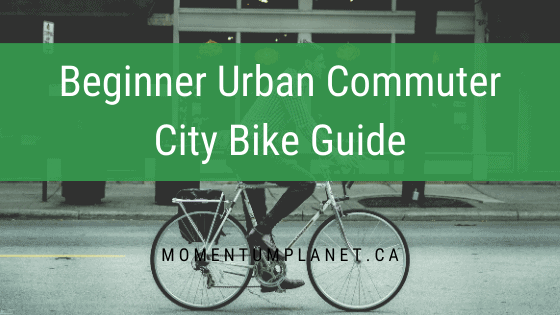
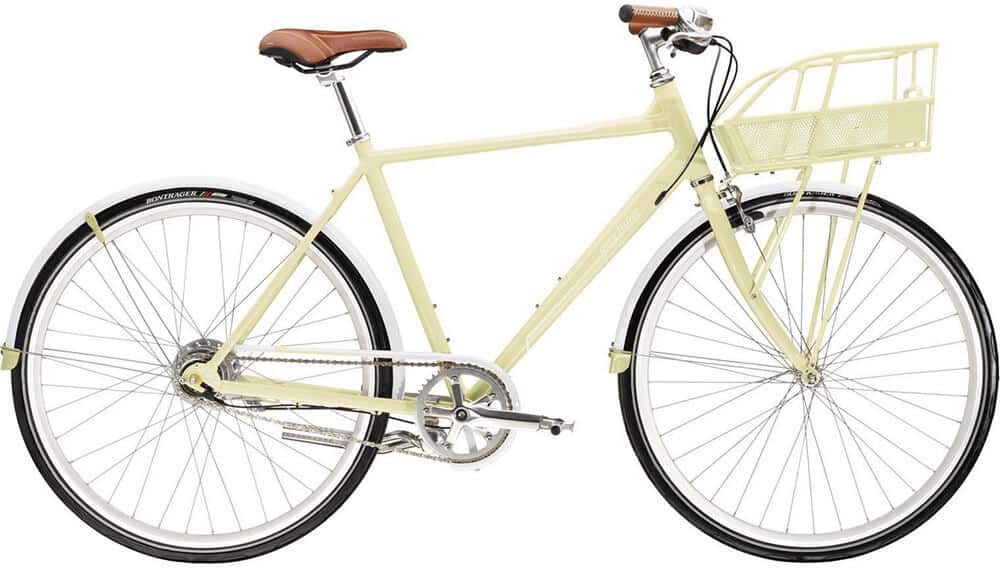
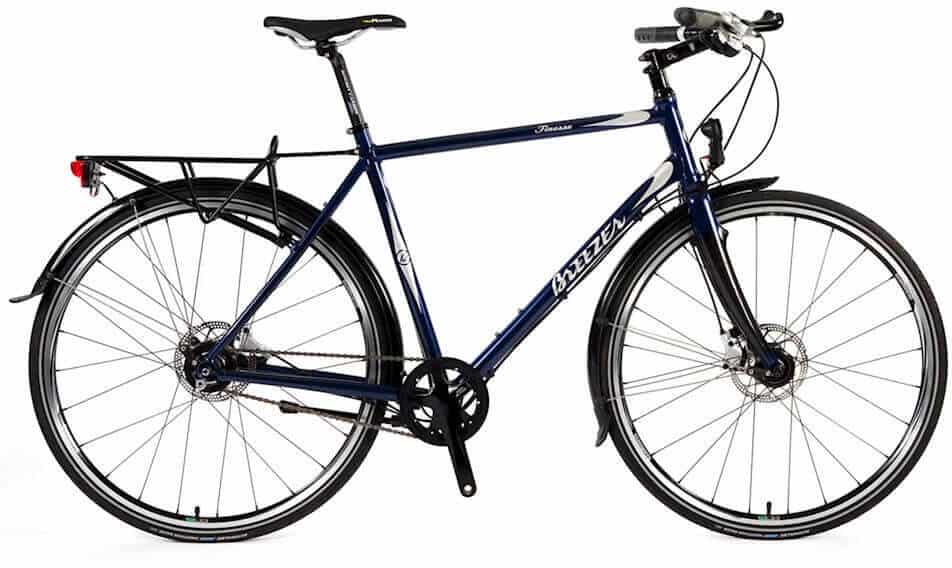
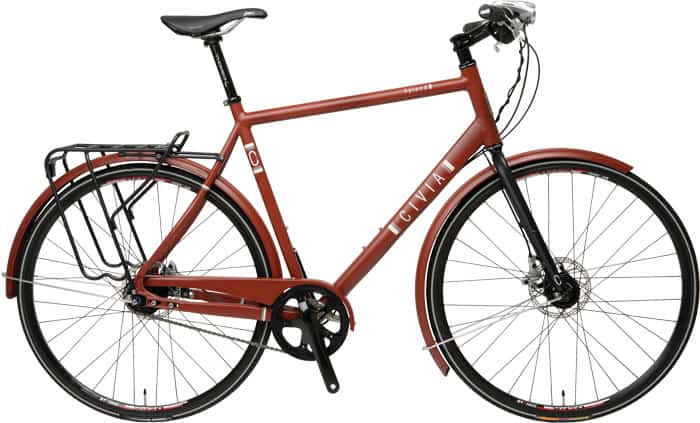
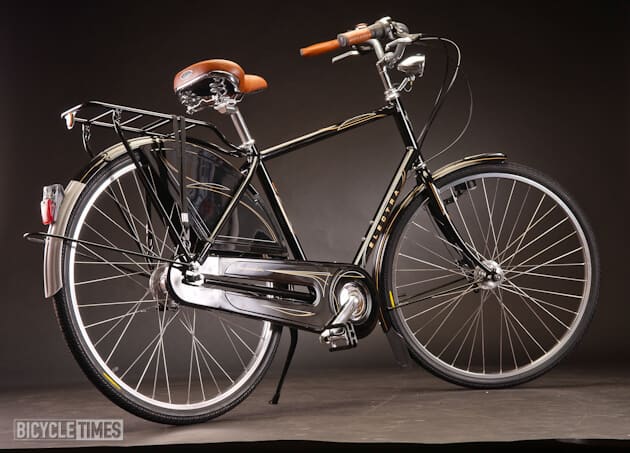
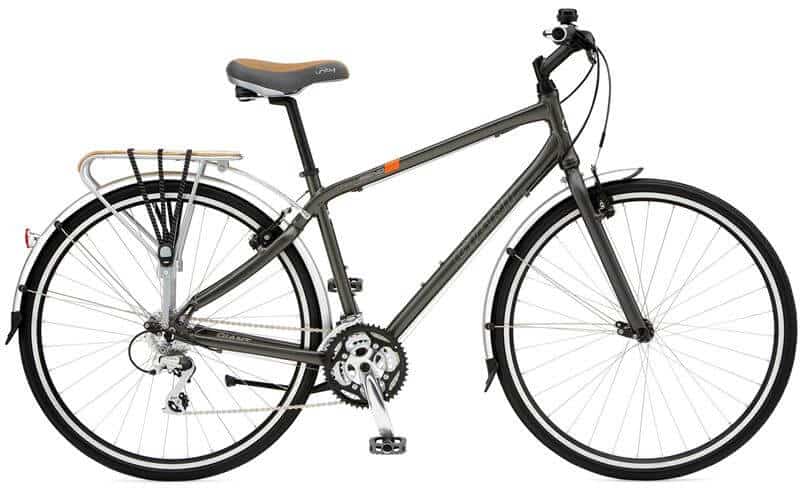
4 replies on “Beginner Urban Commuters: A Rough Guide to the City Bike”
[…] While this may seem rather grim, have faith my cycling brethren. The media and public are finally waking up to global warming in the last couple years. People are thinking more about alternative transportation and finally North American manufactures are waking up to this possibility. […]
[…] bicycle as a means of transportation, you may have wondered if you are best to buy a road bike or a hybrid city commuter […]
[…] having a bike dedicated to commuting in rainy […]
[…] City Bikes was the first to distribute the bakfiets in Canada. “We had a couple of moms roll in with a kid […]